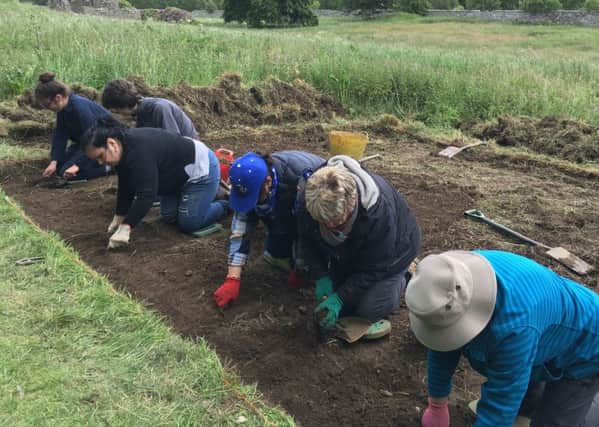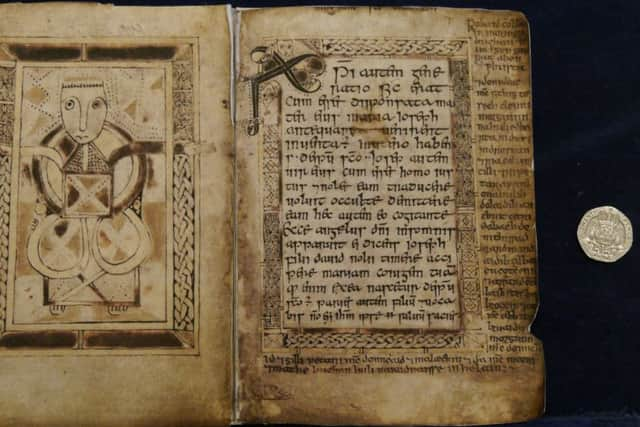Breakthrough in quest for Book of Deer monastery


Recent finds in Aberdeenshire have brought archaeologists closer to pinpointing the whereabouts of the Christian site which was home to the Book of Deer before the monastery disappeared about 1,000 years ago.
Excavations near Old Deer have unearthed a hearth and a thick layer of charcoal, with carbon testing dating the objects to between 1147 and 1260, which chimes with the later monastic period.
Advertisement
Hide AdThe discovery of a layer of stone and post holes also indicate that remnants of a previously undiscovered building lie deep below the earth’s surface.


Archaeologists working for the Book of Deer Project, set up in the 1990s to illuminate the importance of the pocket-sized collection of gospels which includes notes on local life, believe they could now be on the cusp of a discovery of national importance, with teams to return to the site in summer.
Bruce Mann, archaeologist for Aberdeenshire Council, said: “This project has for many years worked hard to identify the location of the lost monastic site.
“These latest discoveries may at last hint that the mystery has finally been solved. More work obviously has to happen, but regardless of what this finally turns out to be, it is a significant find for not only Old Deer, but Aberdeenshire and beyond too.”
The finds were made during the tenth excavation carried out by the Book of Deer project.


The work has been led by Ali Cameron, of Cameron Archaeology, who made the discoveries on her fourth excavation in the Old Deer area.
Advertisement
Hide AdPotential evidence of a previously undiscovered building was made after she switched focus from fields around the village to land close the nearby Deer Abbey, which was built in the early 13th Century after the monastery ceased to be used.
Ms Cameron said: “This is a site that we don’t know anything about. The possibility of locating one building and perhaps more nearby would be of national importance.
“The team are very excited about this.”
Advertisement
Hide AdMeanwhile, discussions are ongoing between the Book of Deer Project and Cambridge University, which has held the manuscript since the early 18th century, to bring the publication home to the northeast for a year-long exhibition at Aberdeen University.
The Book of Deer Project believes that the book was written at the Aberdeenshire monastery around the 10th century, with monks adding notes in the margins about particular aspects of local life, such as land transactions.
Dr Michelle Macleod, lecturer in Gaelic at Aberdeen University, said: “The Gaelic notes in the book are the first written examples of Scottish Gaelic. There are some deviations in the language from the shared common Gaelic of Scotland and Ireland which had been used in earlier manuscripts. These deviations, of which there are several, are the first written indication that the languages are separating and would be an indication of what people were likely saying.
“The Book of Deer is a tiny book but it has left a huge legacy for us, not only in the north-east but for the whole of Scotland. We had to wait another 200-300 years after the Book of Deer to find any more evidence of written Scottish Gaelic.”
Anne Simpson, chair of the Book of Deer Project, said: “The book is as significant as the Book of Kells in Dublin but it is still amazing how even people locally don’t know about it. We have been looking for the monastery for a long time, so there is a great deal of excitement about the discoveries.”
Produced by Midas Media for BBC Alba, Air Tòir Manachainn Dhèir (The Lost Monastery Of Deer) is on BBC Alba, Wednesday, 9pm